Let's talk Dogo Argentino dogs
Athletic, affectionate, and alert, the Dogo Argentino is a breed that stands apart for their intensity as well as their distinctive all-white coat. A traditional sport dog, the Dogo Argentino possesses a very powerful body graced with substantial limbs able to withstand the most vigorous of activity. Despite their background, this is a dog that enjoys family time, too. They are totally devoted to loved ones so guarding the homefront is a given. When everyone’s safe and sound, expect lots of cuddle time, too—and they’ll pull in like a lapdog, big muscles and all.
Official name: Dogo Argentino
Other names: Argentine Dogo, Argentine Mastiff
Origins: Argentina
Drooling tendencies
{score 0 out of 5}Shedding Level
{score 0 out of 5}Energy level
{score 0 out of 5}Compatibility with other pets
{score 0 out of 5}Warm weather
{score 0 out of 5}Suited to apartment living
{score 0 out of 5}Family pet
{score 0 out of 5}Can stay alone
{score 0 out of 5}
| Male | Female |
|---|---|
| Height | Height |
| 62 - 68 | 60 - 64.75 |
| Weight | Weight |
| 40 - 45 | 40 - 43 |
| Adult | |
|---|---|
| 15 monts to 5 years | |
| Mature | Senior |
| 5 to 8 years | from 8 years |
| Baby | |
| Birth to 2 months | |
Drooling tendencies
{score 0 out of 5}Shedding Level
{score 0 out of 5}Energy level
{score 0 out of 5}Compatibility with other pets
{score 0 out of 5}Warm weather
{score 0 out of 5}Suited to apartment living
{score 0 out of 5}Family pet
{score 0 out of 5}Can stay alone
{score 0 out of 5}
| Male | Female |
|---|---|
| Height | Height |
| 62 - 68 | 60 - 64.75 |
| Weight | Weight |
| 40 - 45 | 40 - 43 |
| Adult | |
|---|---|
| 15 monts to 5 years | |
| Mature | Senior |
| 5 to 8 years | from 8 years |
| Baby | |
| Birth to 2 months | |

Get to know the Dogo Argentino
All you need to know about the breed
Regal bearing. Check. Huge athleticism. Check. Docility. Check. The Dogo Argentino dog has a mix of superb traits that any pet owner would appreciate. A mastiff-type dog – the group of breeds marked by a very powerful musculature and substantial stature – the Dogo Argentino is known for their protective nature and a superb devotion to family. They have a natural wariness of strangers, but that can be controlled by early socialisation with animals and humans alike.
The Dogo Argentino breed also has very heightened senses, most of all in their super sense of smell and very alert expression. For this reason, they’re often used in police and search and rescue work, or as service dogs. No matter how you put them to use, this is a dog who thoroughly enjoys learning so can easily follow your lead.
That said, the Dogo Argentino is no wallflower. Key to their superb character is a great amount of fortitude. They were bred for use in sport so have a willingness to duke it out with any would-be aggressors who may threaten those close to them. They are tireless so are excellent watchdogs. All of this means they are not perhaps a dog for first-time owners.
It’s easy to think that dogs with this kind of strength are on the more contentious side; actually, the Dogo Argentino is very sweet-natured. They may give off a tough look but they are mushballs underneath it all.
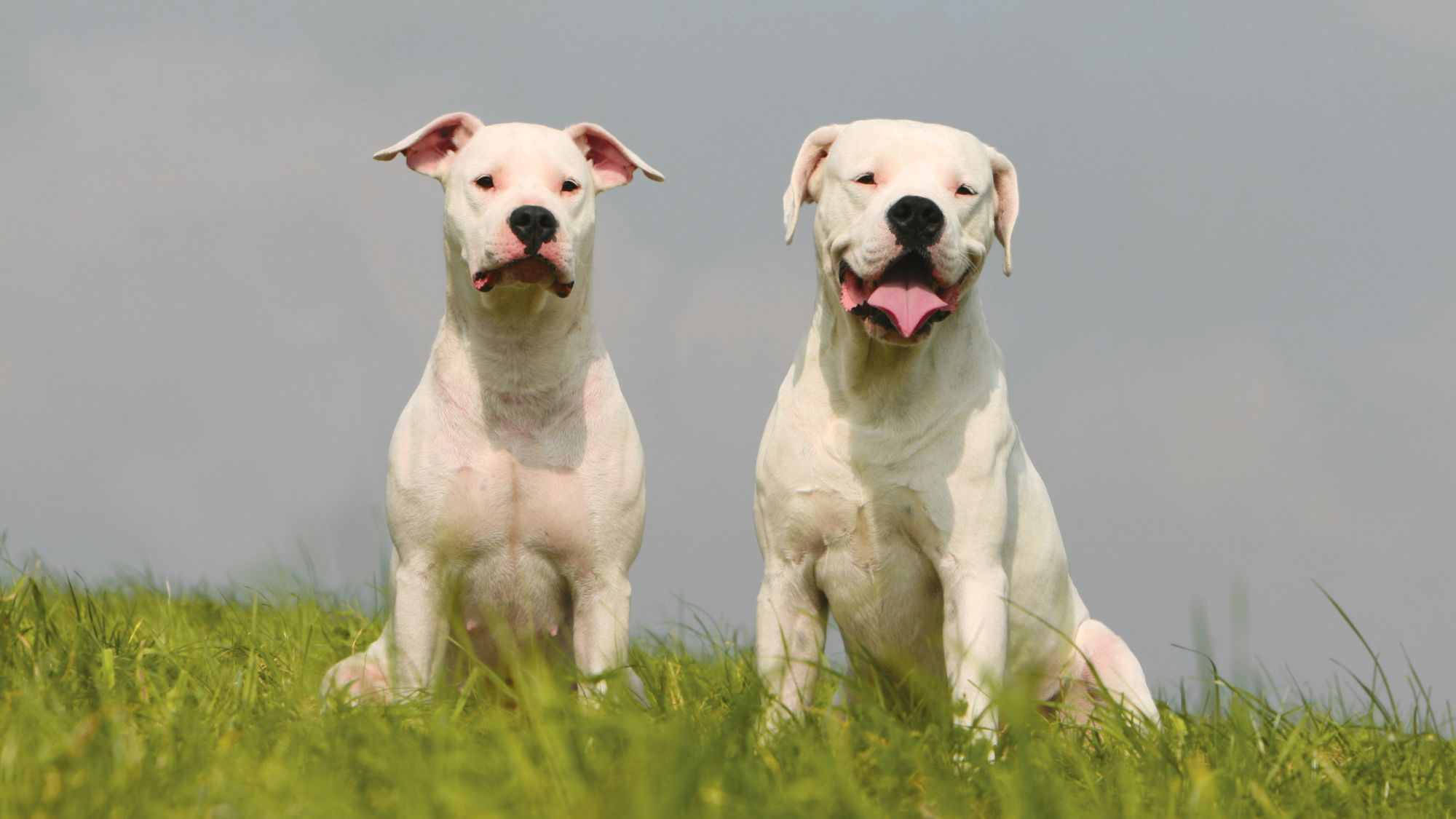
2 facts about Dogo Argentino dogs
1. White out
Few canines come in only one colour but the Dogo Argentino is one. Their short, trim coat comes in a single hue: White, which makes them instantly recognisable. They often have a black patch or spotting over one of their eyes, the only colour intrusion in their frosty fur.
2. Don’t leave me!
Most dogs like being part of the group – dogs or humans – and the Dogo Argentino is no exception. Dogs are pack animals so are relaxed when in the company of others. Having to be home all day while their family is at work and school doesn’t sit well with this breed. Bringing in a fellow canine will help the Dogo Argentino adjust until they see your face again.
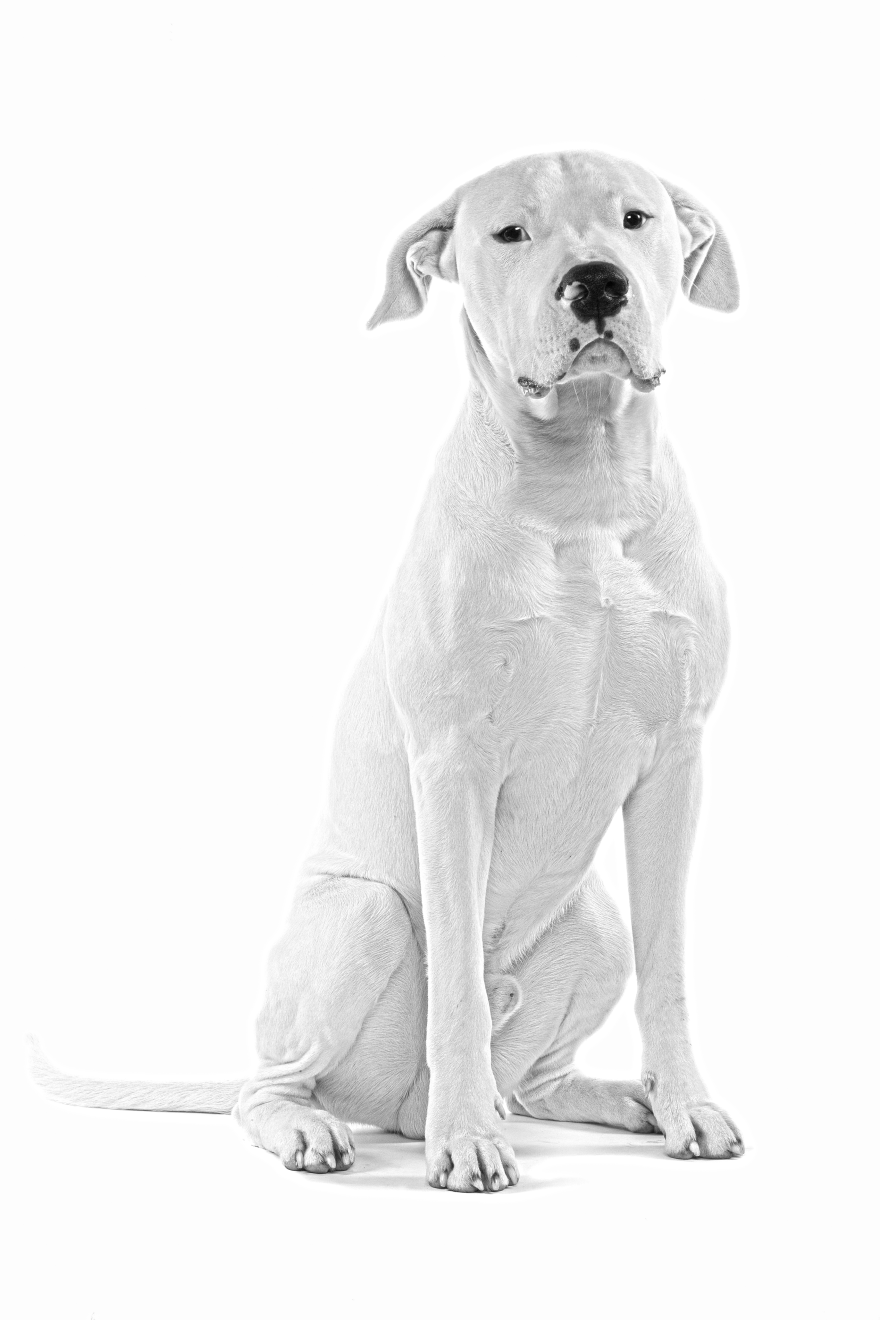
History of the breed
Their name is an instant giveaway: The Dogo Argentino was indeed developed in Argentina by a gentleman named Dr. Antonio Nores Martinez, a young Argentinian surgeon who in 1928 started on a course of breeding a dog that could be used for sport in a nation known for its rugged terrain.
Martinez wanted the new breed to be devoted to their human owner, but to also be fearless. He chose the Fighting Dog of Cordoba as his starting point, given that breed’s intense courage, mixing in many other breeds including the Bulldog, Bull Terriers, and the Mastiff. The prized dog that resulted also showed a talent for guarding home and turf.
The Dogo Argentino was recognised by their home country’s Fédéracion Cinologica Argentina in 1964, by the Fédération Cynologique Internationale in 1973, and by the United Kennel Club in 2001.
From head to tail
Physical characteristics of Dogo Argentino dogs
1.Ears
2.Head
3.Body
4.Tail
5.Coat
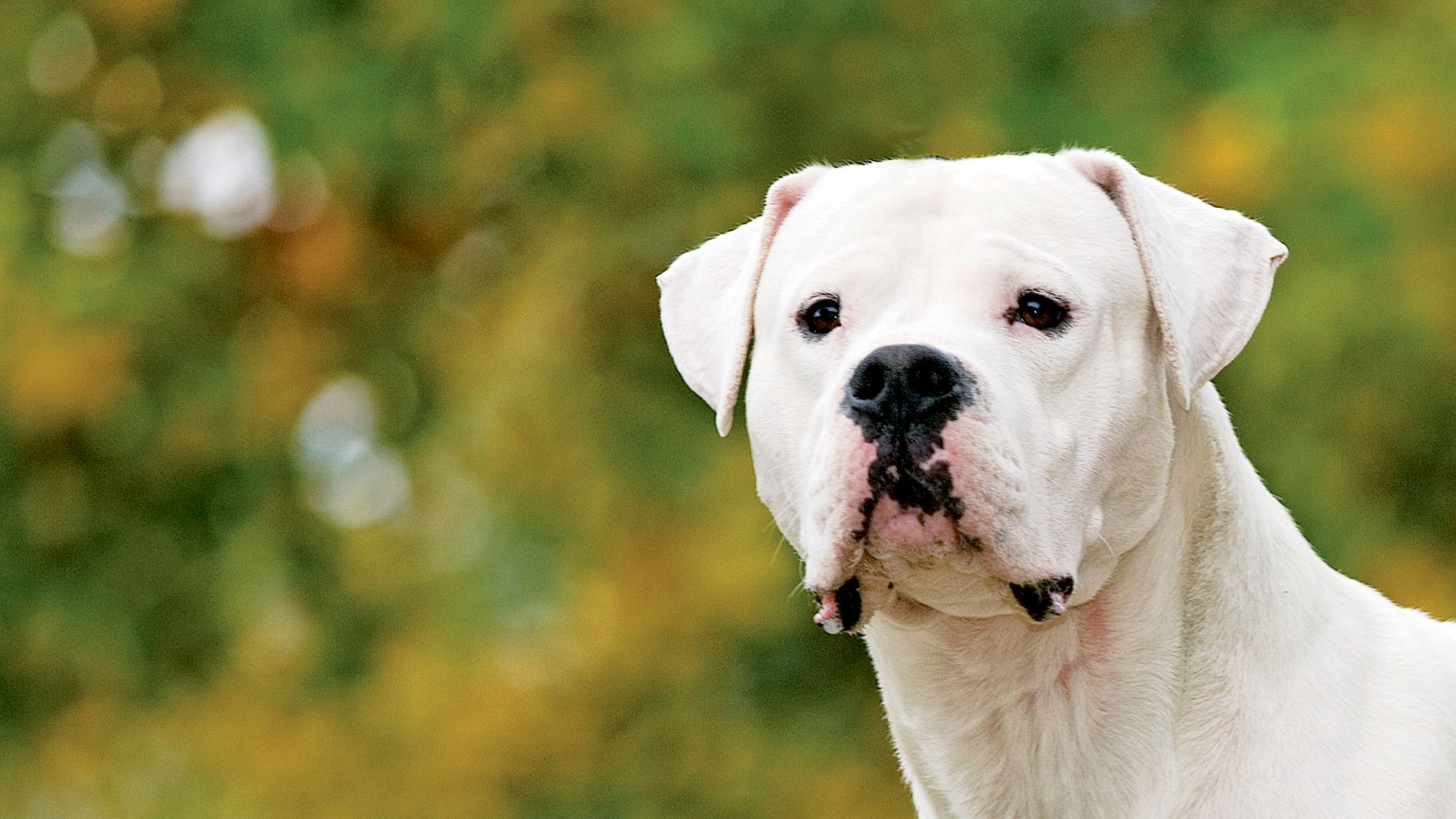
Things to look out for
From specific breed traits to a general health overview, here are some interesting facts about your Dogo Argentino
On the move
Although they made their way into the family unit some time ago, the Dogo Argentino has a history as a sporting dog thus typically has a very high prey drive. They may chase after furry friends – typically ones who are smaller than them (and who isn’t?) – if off leash. A lot will depend on how well you train your Dogo Argentino from puppyhood. Make sure to introduce them to other animals so they’ll be well acquainted with fellow members of the animal kingdom.
Hard to hear
There are many fabulous traits that define the Dogo Argentino: Strong physicality and great health but approximately 10% can be deaf in one or both ears. The white-coat related deafness is genetic so it is recommended to test the puppies. Giving puppies the BAER test (brainstem auditory evoked response) is recommended. Dogs who turn out to be deaf should most likely not be bred. Fear not if your Dogo Argentino is, however, they will be able to live a perfectly normal life.
Healthy diet, healthier dog

When choosing food for a Dogo Argentino, there are many factors to consider: Their age, lifestyle, activity level, physiological condition, and health including potential sickness or sensitivities. Food provides energy to cover a dog’s vital functions, and a complete nutritional formula should contain an adjusted balance of nutrients to avoid any deficiency or excess in their diet, both of which could have adverse effects on the dog.
Clean and fresh water should be available at all times to support good urinary regularity. In hot weather and especially when out exercising, bring water along and give your dog frequent water breaks.
Energy intake may also have to be adapted to the climatic conditions. A dog that lives outdoors in winter will have increased energy requirements.
The following recommendations are for healthy animals. If your dog has health problems, please consult your veterinarian who will prescribe an exclusively veterinary diet.
A Dogo Argentino puppy’s requirements, in terms of energy, protein, minerals and vitamins, are much greater than those of an adult dog. They need energy and nutrients to maintain their body, but also to grow and build it. Until they are 15 months old, a Dogo Argentino puppy’s immune system develops gradually. A complex of antioxidants – including vitamin E – can help support their natural defences during this time of big changes, discoveries, and new encounters. Their digestive functions are different from an adult Dogo Argentino’s, too: Their digestive system is not mature yet so it is important to provide highly-digestible proteins that will be effectively used. Prebiotics, such as fructo-oligosaccharides, support digestive health by helping balance the intestinal flora, resulting in good stool quality.
It is important to choose a kibble with an appropriate size, shape, and texture. This growth phase also means moderate energy needs. Large-breed puppies, such as Dogo Argentino puppies, whose growth period is long and intense, are especially susceptible to skeletal and joint problems, including limb defects, bone deformities, and joint lesions. The first part of growth is mainly concerned with bone development, although the muscles also start to grow. This means that a puppy that eats too much (takes in too much energy) will put on too much weight and grow too quickly. Limiting the energy concentration of a food for Dogo Argentino puppies and feeding a correct daily amount will help control the speed of growth and minimise these risks.
Concentrations of other nutrients should be higher than normal in a specially-formulated growth food. Although the calcium content in the food needs to be increased, maxi-sized breed puppies are more sensitive to excessive calcium intake. It’s important to understand that adding any ingredients to a complete food formulated for the growth phase is at best unnecessary and at worst dangerous for the animal, unless prescribed by a veterinarian. It is recommended to split the daily allowance into three meals a day until they are 6 months old, then to switch to two meals per day.
Throughout their life, it is important to avoid feeding a Dogo Argentino human foods or fatty snacks. Instead, reward them with kibbles taken from their daily meal allowance, and strictly follow the feeding guidelines written on the package in order to prevent excessive weight gain.
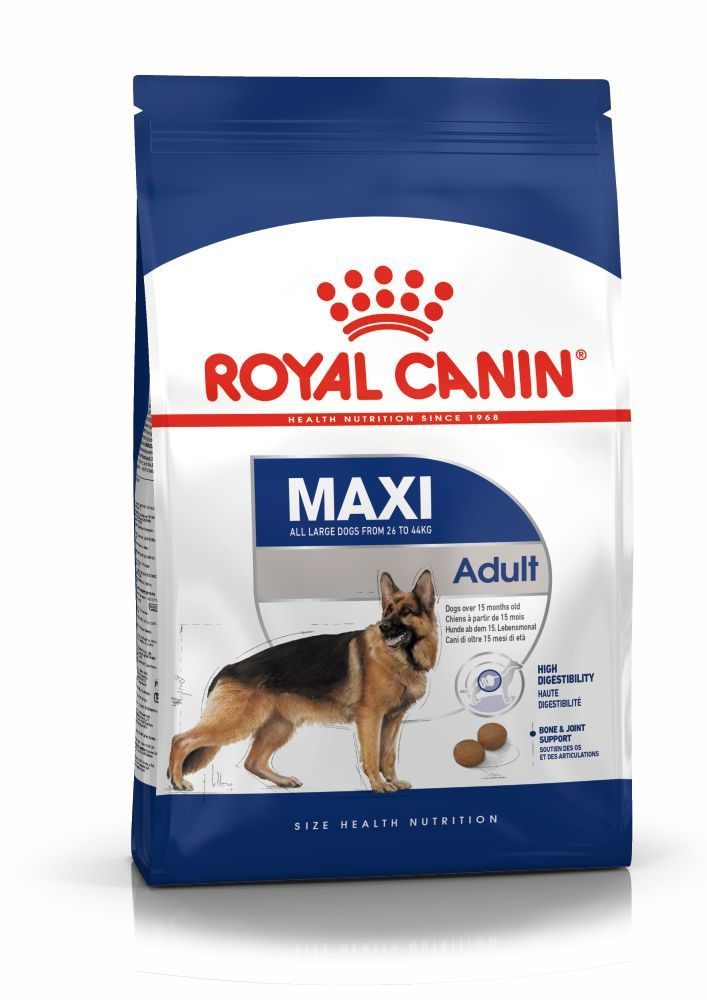
The main nutritional goals for adult Dogo Argentinos are:
Maintaining an ideal body weight by using highly-digestible ingredients and keeping the fat content at a sensible level.
Helping support the health of their bones and joints with glucosamine, chondroitin, and antioxidants.
Promoting optimal digestibility with high-quality protein and a balanced supply of dietary fibre.
Helping to preserve the health and beauty of the skin and coat with the enriched addition of essential fatty acids (especially EPA and DHA), essential amino acids, and B vitamins.
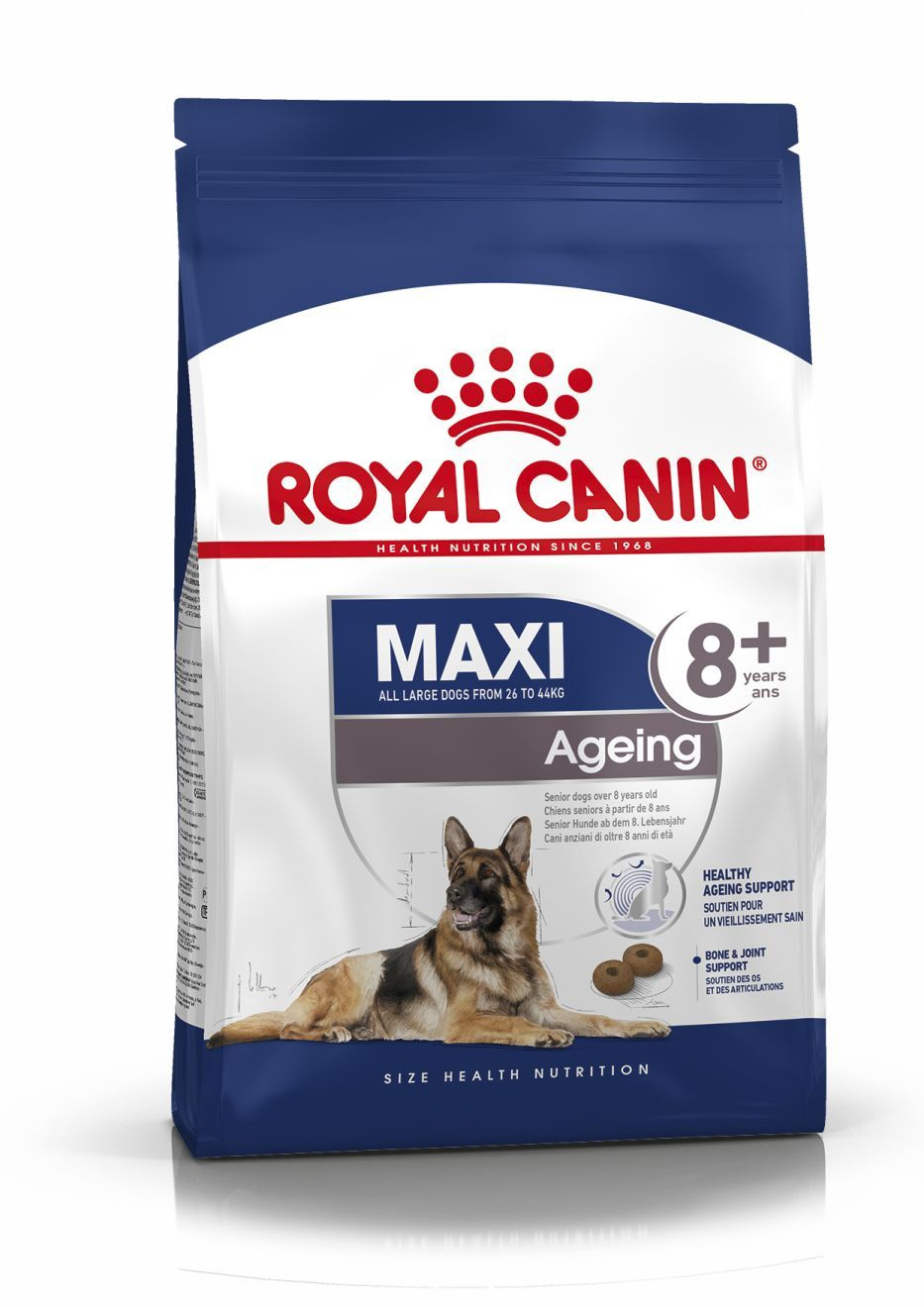
After 5 years old, a Dogo Argentino will start facing the first signs of ageing. A formula enriched with antioxidants will help maintain their vitality, and specific nutrients, such as chondroitin and glucosamine, will help support healthy bones and joints. Ageing is also accompanied by the modification of digestive capacities and particular nutritional requirements, so food for an older Dogo Argentino should have the following characteristics:
Higher vitamin C and E content. These nutrients have antioxidant properties, helping to protect the body’s cells against the harmful effects of the oxidative stress linked to aging.
High-quality protein. Contrary to common misconception, lowering the protein content in food offers little benefit in terms of limiting kidney failure. In addition, older dogs are less efficient at using dietary protein than younger dogs. Reducing the phosphorus content is a good way of slowing down the gradual deterioration of kidney function.
A higher proportion of selected trace elements to maintain the skin and coat in good condition.
A higher quantity of polyunsaturated fatty acids to help maintain the quality of the coat. Dogs can normally produce these fatty acids, but aging can affect this physiological process.
As they age, dogs are increasingly prone to teeth problems. To ensure they continue to eat enough, the shape, size, and texture of their kibble needs to be tailored to their jaws.
Caring for your Dogo Argentino
Grooming, training and exercise tips
7/7
All about Dogo Argentino dogs
This is a breed who’s very protective of the family, which means children, too. The Dogo Argentino’s high level of intelligence means they’re always aware of their environment, and their affectionate and watchful nature makes them a natural around younger ones. Their size and strength, however, necessitates supervision—they could knock over little kids without meaning to.
Good question! Getting a dog with the right mix of traits that suits you and your – or your family’s – lifestyle is key to group harmony. Knowing if the Dogo Argentino breed is right can start with the choice of a good breeder if looking for a puppy, or, if you’re after an adult dog, making sure to find one at a reputable shelter or rescue, where the dog’s characteristics and behaviour can be easily observed.
Suggested Breeds
Read more on this topic
Sources
- Veterinary Centers of America https://vcahospitals.com/;
- Royal Canin Dog Encyclopaedia. Ed 2010 and 2020
- Banfield Pet Hospital https://www.banfield.com/
- Royal Canin BHN Product Book
- American Kennel Club https://www.akc.org/
Like & share this page